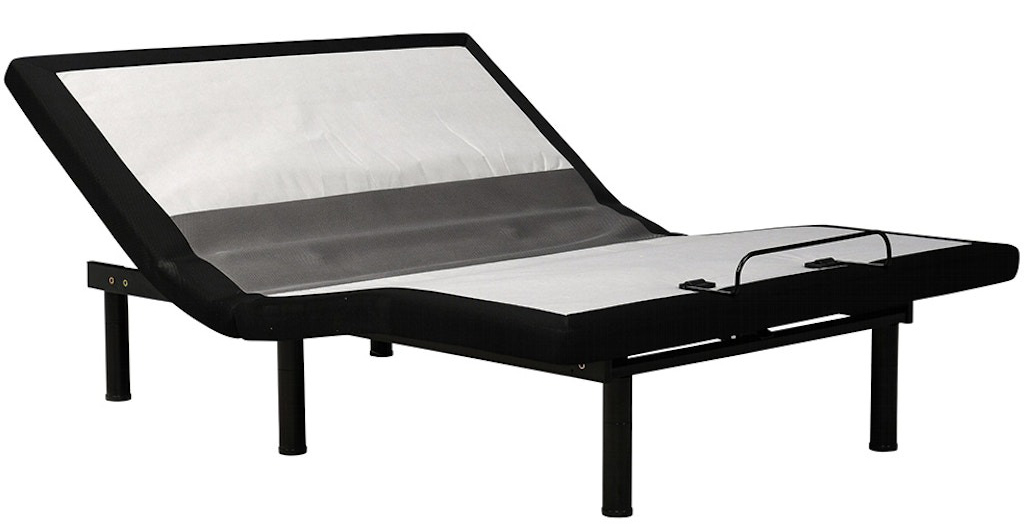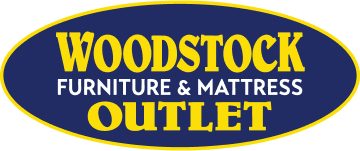We get it – shopping for a new bed or mattress should be simple. But when you start hearing terms like “bunkie board”, “mattress foundation”, or “bed base”, things can get confusing fast. What’s the difference between a headboard and a footboard? What are bed rails? Are they the same as side rails? Do you really even need a box spring these days?
If you’ve ever found yourself Googling “what is a bunkie board” or pondering the different types of bed bases while standing in a mattress showroom, the short article below is just for you. Whether you’re furnishing your first apartment or upgrading to a king-size bed, we’re here to help clear up all the lingo.
By the end of this short article, you’ll have answers for your bed FAQs and you’ll feel much more confident while shopping for your perfect bedroom setup. Let’s get to it!
Bed Components: What Gives a Bed Its Structure?
Let’s start with the basics – the individual parts and components that make up your bed. Each piece serves a different purpose, and knowing what’s what can make your shopping experience significantly less stressful.
Headboard
The headboard is a decorative (and often functional) panel that sits at the head of the bed, typically against a wall. Headboards can be simple or sophisticated, and made from a variety of materials, such as metal, wood or upholstery. Headboards can be used by themselves in a purely decorative capacity attached to a basic metal bed frame, or they can be combined with a footboard, side rails, and slats to form the structural basis for your bed.
Footboard
Located at the foot of the bed, this piece mirrors the headboard in style. Most beds come with both a headboard and a footboard, but occasionally they will feature just a headboard. Footboards are mostly decorative, but can add structure and symmetry to your setup.
Side Rails (i.e. Bed Rails)
Side rails run along the left and right sides of the bed, connecting the headboard to the footboard. They also support the structure of the bed and hold the bed’s base or foundation in place via bed slats and sometimes, a center support rail. You’ll frequently hear side rails also referred to as bed rails.
Center Support Rail
Queen size beds and larger typically include a center support rail that runs from the headboard to the footboard right down the middle of the bed frame. This center support helps prevent bowing and sagging by providing additional support for the foundation and mattress.
Slats (i.e. Bed Slats)
Slats are the horizontal boards that run across the width of the bed frame. In platform beds, they may support the mattress directly. However, in other types of beds such as panel beds, they act as a base for mattress foundations or box springs. Some beds have just a few slats while others have fully slatted systems. Essentially the more slats you have and the closer together they are, the better support a bed will offer.
Bed Frame
The bed frame is the base structure that holds everything together. As we discussed above, a bed frame is what you get when you put your headboard, footboard, side rails and slats together. However, in other cases, it might be a simple metal frame or wooden piece that a mattress foundation and mattress can sit directly on.

Bed Risers
While technically not a standard bed component, it is still worth a mention. Bed risers are small supports you can place under the legs of your bed frame to raise it up slightly. These pieces are ideal for adding storage space underneath the bed or for adjusting a bed’s height for comfort or convenience.
Trundle
A trundle is a low, pull-out bed frame designed to roll or slide underneath another bed frame. It typically requires a thinner mattress, but it can be pulled out when an extra sleeping surface is needed. Trundles are especially popular in kids' rooms, guest rooms, or any multi-use space where you need an extra bed without sacrificing floor space. To that point, some trundles can even be used (without a mattress, of course) for convenient under-bed storage.
Mattress Support: Types of Bases & Foundations
Now that we’ve defined the various elements of the bed itself, let’s talk about what goes between your bed and your mattress. For many consumers, this part of the bed puzzle is the most confusing. However, it is also one of the most important when it comes to a mattress’ comfort, support, and durability.
Bed Base (i.e. Mattress Base)
Bed base or mattress base are general, catch-all terms that refer to any type of support system placed under your mattress. This can include box springs, mattress foundations, adjustable bases, bunkie boards, or even slatted systems on some platform beds.

Box Spring
This traditional mattress foundation used a wooden frame filled with metal coils or springs, all covered in fabric. These were originally designed to absorb shock and increase the lifespan of innerspring mattresses. However, due to advancements in materials and construction methods, modern mattresses do not require box springs. The modern equivalent is the mattress foundation, which we’ll discuss below.
Mattress Foundation
A mattress foundation typically looks a lot like a box spring, and is similarly covered in fabric. But rather than housing metal springs, it uses solid wood slats or a grid-like construction to provide a flat sturdy surface for better mattress support. These mattress foundations are often found in regular and low-profile configurations.
Bunkie Board
Speaking of low-profile, the bunkie board is a thin, ultra low-profile foundation that is usually just an inch or two thick. As you might’ve guessed, the term bunkie board originated with the thin mattress foundations used for bunk beds. Bunkie boards are a great way to add additional support to trundle beds, bunk beds, day beds, or frankly, any platform bed that doesn’t require a full box spring. Just lay the bunkie board over the bed slats and you’re good to go!
Adjustable Base (i.e. Adjustable Bed)

An adjustable base is a motorized mattress foundation that lets you raise or lower different sections of the bed. While head-up only versions exist, adjustable bases typically allow users to raise and lower both the head and foot, along with a great many other features. Adjustable bases are perfect for reading and watching tv, or for providing relief for sleepers who snore, suffer from sleep apnea, acid reflux, or any number of other medical conditions that require custom sleep positions. While initially designed with foam mattresses in mind, modern hybrid and innerspring mattresses are increasingly being made for compatibility with adjustable bases.
One Final Note on Platform Beds
While technically not a type of base or foundation, it’s important to understand what platform beds are and what separates them from more traditional style beds, such as panel beds. Why? Because these differences may have implications for the base or foundation you should choose.
By definition, a platform bed includes a built-in support system, often a full set of slats, a solid panel, or a grid support system. This means that you may not need a separate mattress foundation in addition to your bed. Just throw your mattress on top and you’re good to go. As a result, platform beds are typically minimalist and sit fairly low to the floor.
By contrast, more traditional bed designs feature a headboard and footboard with side rails and a supportive frame designed to hold both a mattress and a foundation. Unlike a platform bed, these beds are intended to be used with a bed base of some kind in order to ensure proper height and comfort.
It is important to note that ultimately the type of bed base required also depends on the mattress that you’ve chosen. While many platform beds are indeed designed to support a mattress on slats alone, mattress manufacturers sometimes require some type of foundation underneath (or at least a minimum number or distance between bed slats) to ensure proper support and to maintain the manufacturer’s warranty.
Quick FAQs for Bed & Mattress
Q: Does every bed require a box spring or mattress foundation?
Not necessarily. Traditional panel beds typically require a mattress foundation of some sort, while platform beds do not. For a little extra support for your platform bed however, you may consider adding a bunkie board. If you’re opting for an adjustable base, both panel and platform beds are made to accommodate adjustable bases these days.
Q: What about mattresses? Does every mattress need the support of a box spring, foundation or adjustable base?
Well, box springs are more-or-less extinct, but most modern mattresses provide the best support on a mattress foundation or adjustable base. However, in the event that you’re putting a mattress on a platform bed, a foundation isn’t always necessary. Be sure to check your mattress warranty or ask us – we’re happy to help!
Q: Can I use a bunkie board instead of a mattress foundation? How about instead of slats?
Yes to both! Especially if your bed frame doesn’t have slats or you want to add extra support on top of your slats. Bunkie boards are often used to create a more supportive base without adding too much height. Just remember that a bunkie board is a compromise between support and mattress height and won’t provide the same degree of support as a thicker mattress foundation.
Q: Is an adjustable base or mattress foundation better for me?
Well, the answer to this question honestly depends on your needs. For the overwhelming majority of folks, we’d recommend adjustable bases for the sheer number of benefits that they can offer sleepers. However, for those on the strictest of budgets seeking a low maintenance solution, there’s nothing wrong with a traditional mattress foundation.
A Better Night’s Sleep Starts with the Right Setup
Here at Woodstock Furniture & Mattress Outlet, we understand that getting a better night’s sleep starts with the right sleep system – the right bed, the right mattress, the right pillow, and even the right bedding. Have more questions about your current setup? Unsure about what kind of support your mattress needs? From stylish beds to supportive mattress bases, our team is here to help you navigate these questions and find the right combination of comfort, style, and support that’s right for you.
We can’t wait to help – whether you’re ready to buy or just figuring things out. Feel free to give us a call, stop by any of our North Georgia furniture and mattress showrooms, or send us a message online using our convenient web chat. See you soon!








